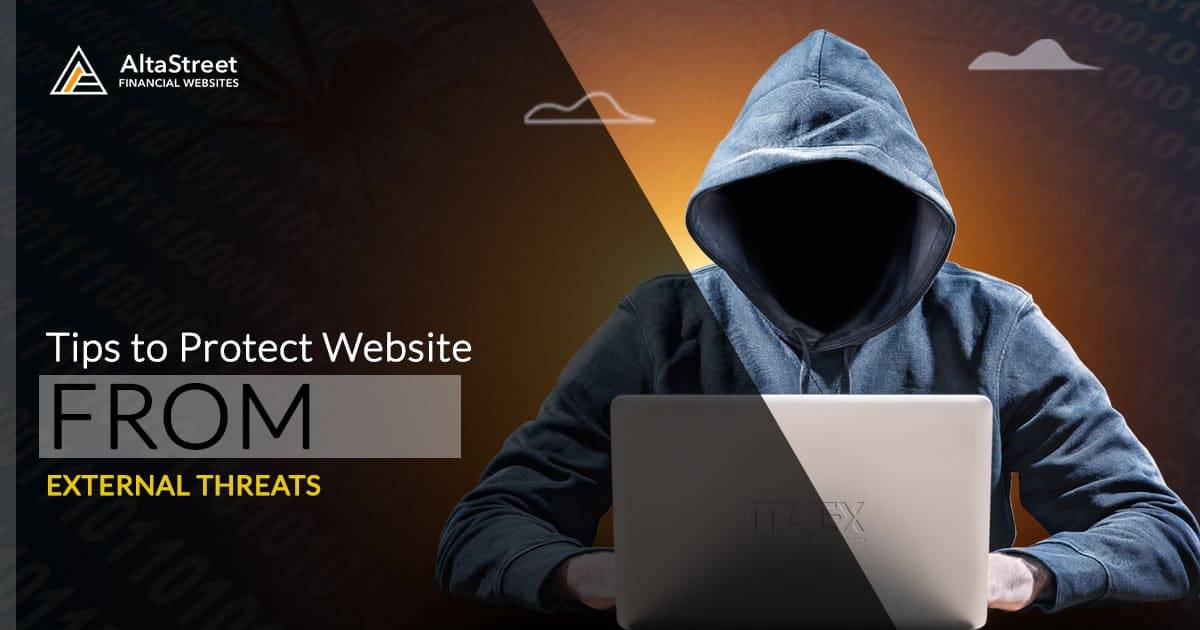
Cybersecurity Best Practices for Financial Advisor Websites
Hackers and cybercriminals are well aware that financial advisors have access to their clients’ financial information. This makes you a prime target for different kinds of attacks.
As a trusted custodian of people’s sensitive personal and financial data, you should be vigilant about keeping your customer data safe from prying eyes. A simple breach can cost you millions in lost business and damage your practice’s reputation.
Aside from putting in place security protocols and measures to ensure your devices and systems are safe from cyber attacks, you should also make sure your website is not vulnerable.
A common phishing tactic is when hackers introduce malicious code or even replace pages on your website to collect data from your site visitors. On the surface, everything looks legitimate to your customers, but their personal information is actually being routed somewhere else whenever they try to sign in to their account or fill up a form.
You can protect your website from cyberattacks and remove potential vulnerabilities by acting on the tips we’ll provide below. Your developer or web designer should be familiar with these basic cyber security measures, but it’s always a good idea to be aware of them and double check if they’re in place.
Install a Security Plugin
An easy way to add some protection to your website is to install a security plugin. It’s absolutely essential if you don’t have a developer who can maintain and keep an eye on your website.
Security plugins like iThemes Security and Wordfence for WordPress websites, for example, can automatically apply fixes for the most common security issues. These plugins can also monitor and notify you of threats to your website.
These plugins will use additional resources and may slow down your site, but it’s always better than nothing.
Update and Patch Regularly
Your website needs to be regularly updated and patched just like any IT asset. Updates are necessary because they address and fix bugs and vulnerabilities that hackers can exploit.
Simply using the latest frameworks, libraries and plugins helps you stay one step ahead of the majority of hackers.
Ensure Your Website Configurations Are In Order
It’s important to regularly check that all security-related configurations on your website are enabled. If you’re installing a new component, double check if there are additional settings you need to configure. Some updates can also reset configurations to their default setting and leave you vulnerable to attacks. You should also make sure your website configurations aren’t easily accessible in an unencrypted file on your server, or even worse, hidden somewhere in the code.
Install an SSL Certificate
Your site probably already uses an SSL certificate but it’s still a good idea to understand what they actually do.
SSL certificates are required to be able to use HTTPS – the secure version of HTTP. You can verify if you’re using HTTPS if there’s a padlock icon to the left of your website address.
Nowadays, browsers will show a warning before displaying unsecure websites that don’t use HTTPS. Of course, when your users see such a warning, alarm bells tend to go off in their heads. Research has also shown that HTTPS websites get better SEO rankings than HTTP sites.
In a nutshell, SSL certificates are necessary to encrypt the data transferred between your users and your website. This prevents man-in-the-middle attacks where someone can just swoop in and read any information, such as usernames and passwords, that your users are entering into your website. Even if somebody accesses the data, they won’t be able to read it without your SSL certificate because it’s still encrypted.
Use Strong Passwords
Adopting a strong password policy gives you an extra layer of protection against attacks. Even the most stringent website security measures can easily be breached if someone on your team or one of your users has a weak password.
A strong password that requires upper and lowercase letters, numbers, and special characters are much harder to crack using brute force methods. This should be required for both website visitors, as well as people who have access to your website server.
You can also add extra layers of security by requiring routine password changes or multi-factor authentication.
Limit Access to Your Site with User Roles
Not everyone who works on your site has to have administrative or root access. You should only grant these permissions to people who need them. Writers or contributors, for example, should have more limited access to your site. Otherwise, they might end up changing things they shouldn’t be touching.
You should also keep track of your users and make sure privileges are revoked when it’s no longer required. You don’t want a contractor to continue to have access to your site long after their job is finished.
Secure File Uploads
If you allow users to upload files onto your site, make sure you have ways to validate the files first. Uploaded files can contain malicious code and scripts that could compromise the security of your website and your user data. You should also make sure uploaded files can’t be executed to prevent malware from running amok on your servers.
The best way is to integrate a third party like Dropbox to take care of file uploads since they can do a much better job at securing files. If any malicious files do get through, it won’t affect your site because it will be on a separate server.
Maintain Regular Backups
In case your website goes down due to an attack or some unforeseen circumstance, a recent backup should always be ready to go. It’s important to have your backups off-site so that it isn’t affected in case the entire server goes down or if there’s any hardware failure. Having multiple redundant backups is always a good idea to avoid extended downtime.